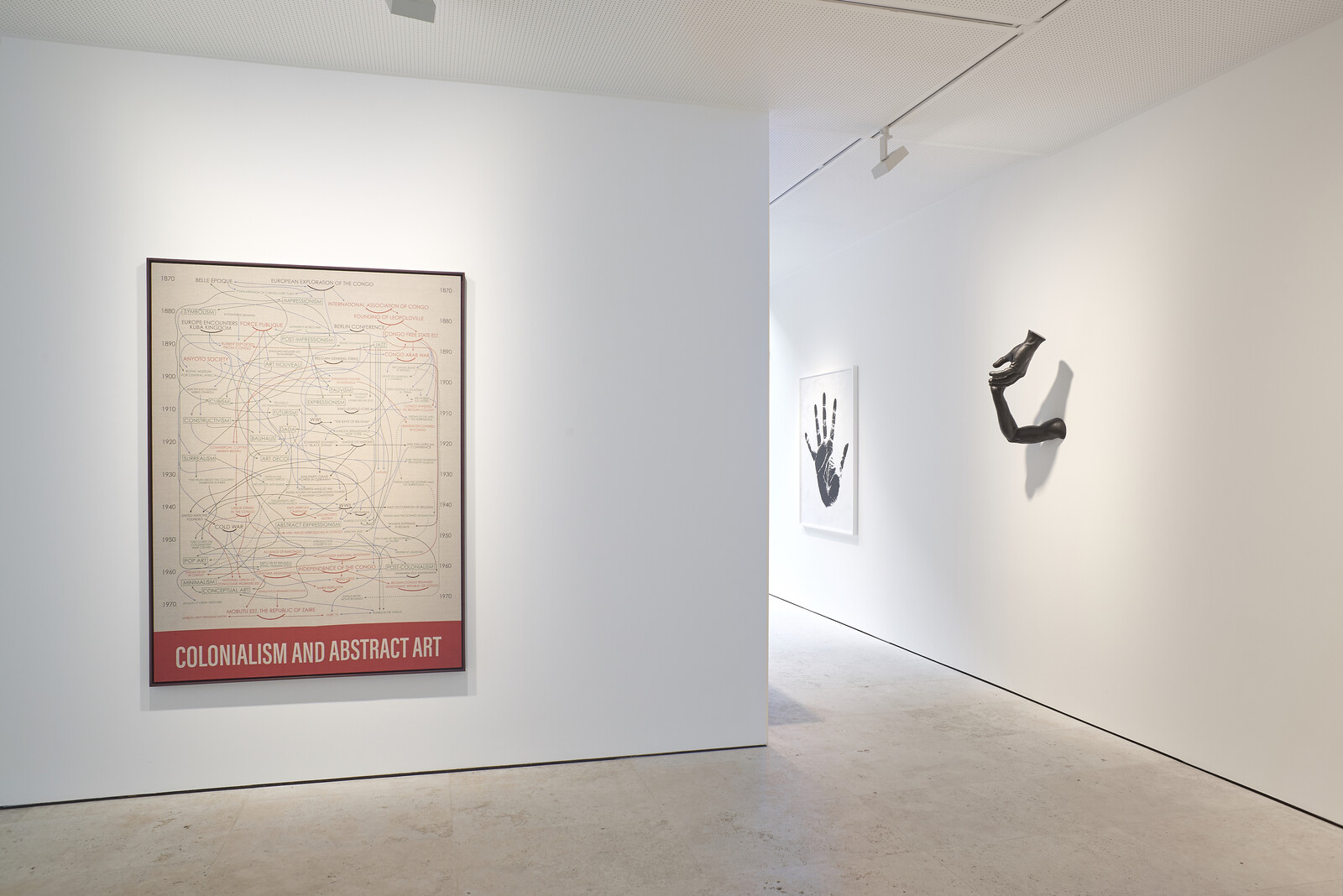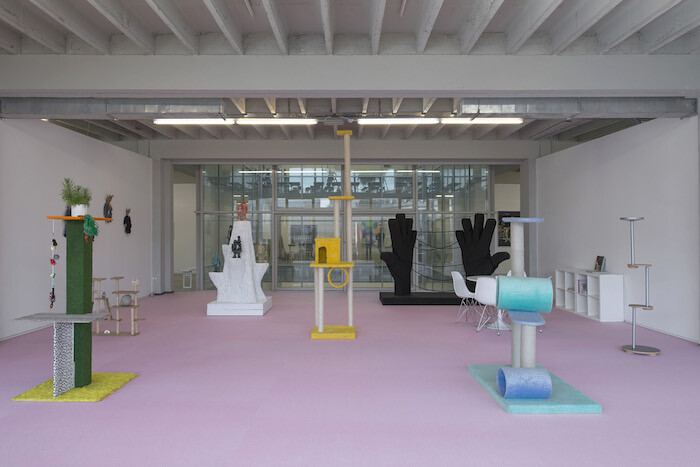Categories
Subjects
Authors
Artists
Venues
Locations
Calendar
Filter
Done
May 16, 2019 – Feature
Brussels Roundup
Chloe Stead

Often referred to as the chocolate capital of the world, it’s said that no visit to Brussels is complete without a trip to one of the city’s famous chocolate shops. In Hank Willis Thomas’s exhibition “Donnez votre main” at Maruani Mercier, the American artist shows a new body of work which posits an uncomfortable truth: Belgium’s predilection for chocolate is explicitly linked to its colonization of Congo under King Leopold II. The grizzly practice of cutting off the hands of the wives and children of workers who didn’t meet the king’s strict quotas for natural resources like cocoa, ivory, and rubber is represented throughout the exhibition, most notably in a collection of framed Antwerpse handjes—traditional Belgian chocolates shaped like hands—which Willis Thomas has arranged into patterns traditionally associated with Congolese textiles. The rest of the exhibition is dedicated to a number of screenprints mostly based on archival photographs of Belgium and Congo during colonization—made on retroreflective material that is only fully revealed when photographed. It can sometimes feel tedious, if not downright gimmicky, to view an exhibition through a cellphone screen, but this is an admittedly clever way of linking historic examples of exploitation and human rights abuses in Congo …
May 16, 2016 – Feature
Brussels Roundup
Arielle Bier

Brussels, still reeling from the ISIS nail-bomb attacks at Zaventem Airport and Maalbeek metro station in March, was raw and rough around the edges when the time for its scheduled art fairs arrived—the more traditional Art Brussels and the progressive New York transplant Independent. Needless to say, cautionary sentiments preceded all the fanfare this year. Partial closure of the airport’s departure halls and rerouted flights steered away many would-be visitors, while the subways operated at half-capacity with travelers favoring the perceived safety of Uber taxis. The doubling of machine-gun-touting military, Humvees, and tanks patrolling the streets and train stations didn’t necessarily help to calm nerves. Yet the bombings didn’t come as a surprise for many in town, considering the now evident links between disenfranchised radicals in Brussels and Paris. Endemic violence is all too familiar in this polyglot city, rife with racism and economic inequality—both sustained vestiges of its colonial past, riding on the shoulders of contemporary socio-political issues.
Despite the major funding cuts in 2014-2015 to established institutions for dance and theater like La Monnaie, BOZAR, and Beursschouwburg, Brussels’s contemporary visual art scene is flourishing. Why? This is a historic city that offers rich creative fodder, but that’s already a …
May 13, 2016 – Feature
Art Fair Roundup: Berlin, Brussels, Cologne, New York
Stefan Kobel

When Claus Föttinger installed his Bar 60/99-16 (2016) in the booth of Düsseldorf’s Van Horn Gallery at Art Cologne, Rhinelanders did what they are said to do best and partied, using the installation as an actual bar. Yet what might have been expected to be the biggest celebration—the opening of the 50th Art Cologne, the oldest continuously running contemporary art fair—was a rather sober event. Everything was in place: after a long and painful downturn, some important international galleries have returned to the fair since Daniel Hug became director in 2008. Almost all of the predominant German protagonists have become regulars again since the death of Art Forum Berlin in 2010, and collectors from neighboring countries visit the fair, even some Britons and Americans. All this adds to the unrivaled (in Europe) density of private collectors and institutions in the Rhine region. Sales have always been solid—rarely spectacular—at Art Cologne, where the collectors are traditionally educated and savvy but not deep-pocketed.
But for a 50th jubilee one would have expected more. The low-key atmosphere was only partly due the general sentiment of a world in crisis, and there are structural reasons why the fair felt uninspiring. One of its strengths has …